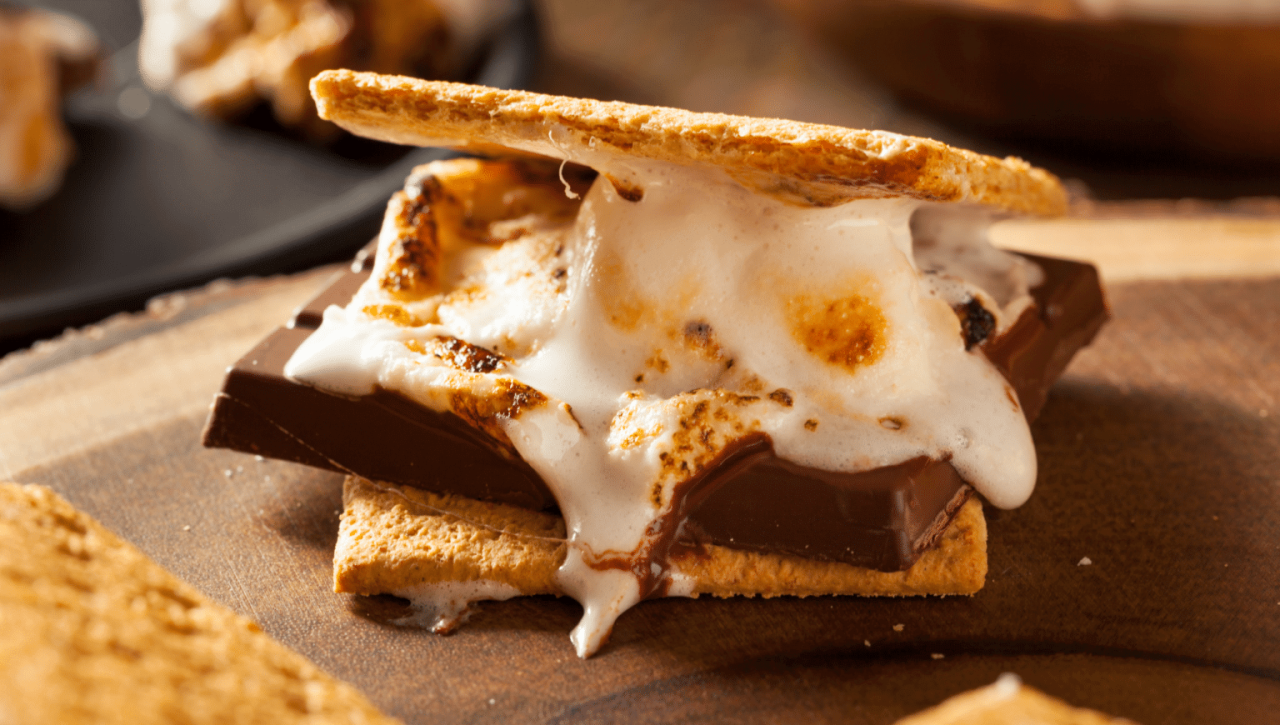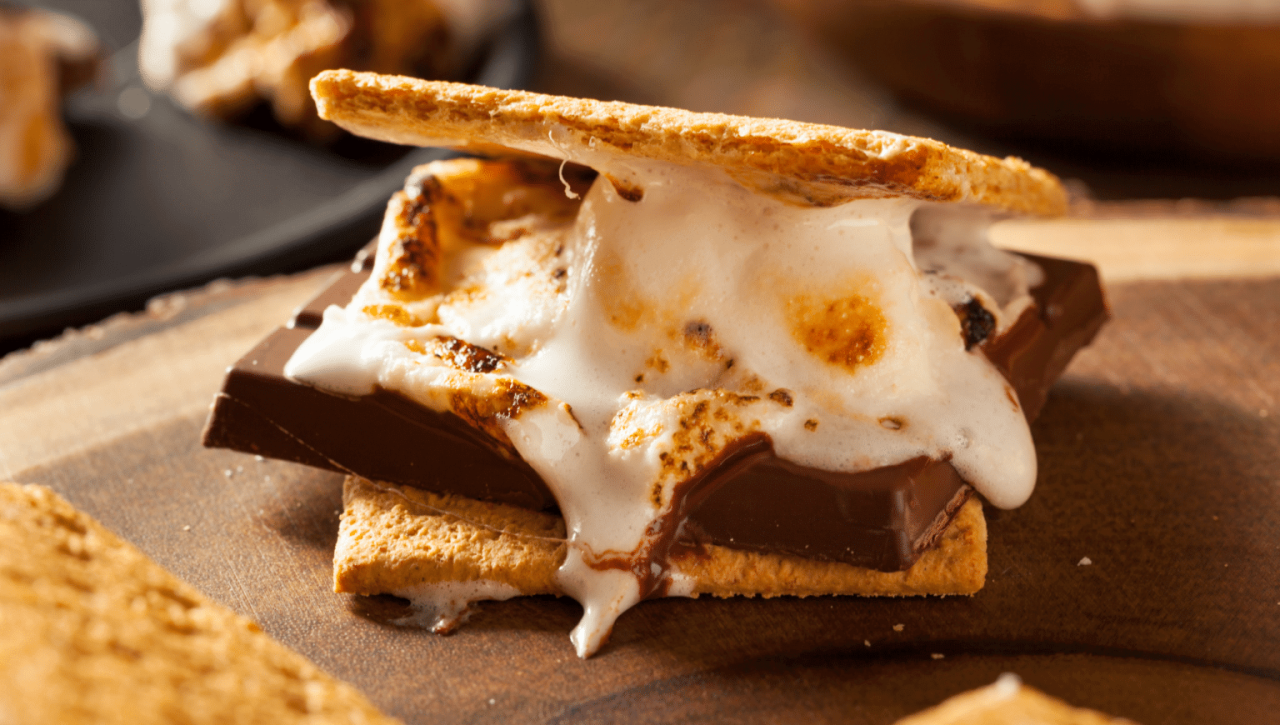Like the texture of a roasted marshmallow nyt, this culinary adventure takes you on a journey through the world of marshmallow-like textures, exploring techniques, science, and delectable recipes that capture the essence of this beloved treat.
From the science behind its unique texture to innovative dishes that showcase its versatility, this exploration uncovers the magic of marshmallow-like textures, tantalizing your taste buds and inspiring your culinary creativity.
Culinary Exploration of Marshmallow-Like Textures: Like The Texture Of A Roasted Marshmallow Nyt

The unique texture of a roasted marshmallow, characterized by its airy, chewy, and slightly crispy exterior, has captivated taste buds for generations. Culinary enthusiasts have embarked on a quest to replicate this beloved texture in various culinary creations, resulting in a plethora of innovative techniques and delectable dishes.
The formation of the marshmallow-like texture is a complex process involving caramelization and Maillard reactions. When sugars are heated, they undergo caramelization, resulting in the formation of flavorful compounds and a golden-brown color. Maillard reactions, on the other hand, occur between amino acids and reducing sugars, leading to the development of complex flavors and aromas.
Techniques for Achieving Marshmallow-Like Textures
- Whipping: Whipping egg whites or cream incorporates air, creating a light and fluffy texture similar to marshmallows.
- Gelatinization: Gelatin, when hydrated and heated, forms a gel network that traps air, resulting in a chewy and elastic texture.
- Extrusion: Extruding a mixture of sugar and water through a fine nozzle creates thin strands that caramelize quickly, forming a crispy exterior and a soft interior.
- Freeze-drying: Freeze-drying removes moisture from a mixture, creating a porous and airy texture that resembles marshmallows.
Culinary Applications of Marshmallow-Like Textures
Marshmallow-like textures have found their way into a diverse range of culinary applications, from desserts to savory dishes.
- S’mores: The classic combination of graham crackers, chocolate, and roasted marshmallows epitomizes the marshmallow-like texture.
- Marshmallow Fluff: A spreadable confection made from whipped egg whites, sugar, and corn syrup, marshmallow fluff provides a light and fluffy texture to desserts.
- Marshmallow Fondant: A pliable icing made from gelatin, sugar, and water, marshmallow fondant is used to decorate cakes and other desserts.
- Savory Marshmallows: Chefs have experimented with savory flavors in marshmallows, incorporating herbs, spices, and even bacon.
Sensory Analysis of Roasted Marshmallows
When roasted over an open flame, marshmallows undergo a remarkable transformation, acquiring a distinctive sensory profile that sets them apart from their unroasted counterparts. The textural metamorphosis is particularly striking, as the marshmallow’s initially soft and yielding interior transforms into a crisp and slightly chewy exterior, while the core becomes soft and gooey.
The flavor of roasted marshmallows is equally captivating, with notes of caramelized sugar and toasted marshmallows mingling with a subtle smokiness. The aroma, too, is alluring, characterized by a heady blend of sweetness and woodsy undertones.
Influence of Heat Source and Doneness
The sensory characteristics of roasted marshmallows can vary depending on the heat source used and the degree of doneness achieved. Marshmallows roasted over a campfire or wood-burning stove tend to have a more pronounced smoky flavor and aroma, while those roasted over a gas burner or in a toaster oven may exhibit a more subtle smokiness.
The level of doneness also plays a role in shaping the sensory experience. Lightly roasted marshmallows retain more of their original soft texture and marshmallow flavor, while heavily roasted marshmallows develop a more pronounced crispiness and a deeper caramelized flavor.
Cultural Significance and Nostalgic Appeal
Roasted marshmallows hold a special place in the hearts of many, evoking memories of camping trips, backyard gatherings, and childhood adventures. The act of roasting marshmallows over an open flame is a ritual that has been passed down through generations, creating a shared cultural experience.
The nostalgic appeal of roasted marshmallows is undeniable. The sweet, smoky flavor and the slightly crispy exterior evoke feelings of comfort, warmth, and simpler times. It is a treat that instantly transports people back to their childhood, reminding them of carefree days spent around a campfire with loved ones.
Anecdotes and Personal Stories, Like the texture of a roasted marshmallow nyt
- One of my most cherished childhood memories is roasting marshmallows with my family on camping trips. We would gather around the campfire, sharing stories and laughter while the marshmallows slowly turned golden brown. The smell of the burning wood and the sweet aroma of the marshmallows filled the air, creating a magical atmosphere.
- Another time, I remember roasting marshmallows with my friends on a cold winter night. We had built a small fire in the backyard, and the marshmallows provided much-needed warmth and comfort. As we sat there, roasting marshmallows and sipping hot chocolate, we talked about our dreams and aspirations.
It was a night that I will never forget.
Last Point
Like the texture of a roasted marshmallow, this exploration has left a lasting impression, igniting a passion for experimenting with marshmallow-like textures and appreciating the cultural significance and nostalgic appeal of this beloved treat. Whether you’re a seasoned chef or a home cook, may this journey inspire you to create and savor the magic of marshmallow-like textures in your culinary endeavors.
Helpful Answers
What is the secret behind achieving the perfect roasted marshmallow texture?
The key lies in balancing heat and caramelization. Roasting over medium heat allows for even caramelization, creating a crispy exterior while maintaining a soft and gooey interior.
Can marshmallow-like textures be incorporated into savory dishes?
Absolutely! Chefs are experimenting with savory applications, such as crispy marshmallow tuiles for salads or marshmallow espuma to enhance sauces and soups.
How can I replicate the texture of a roasted marshmallow at home without a campfire?
Use your oven’s broiler setting. Place marshmallows on a baking sheet lined with parchment paper and broil for a few minutes, keeping a close eye to prevent burning.

